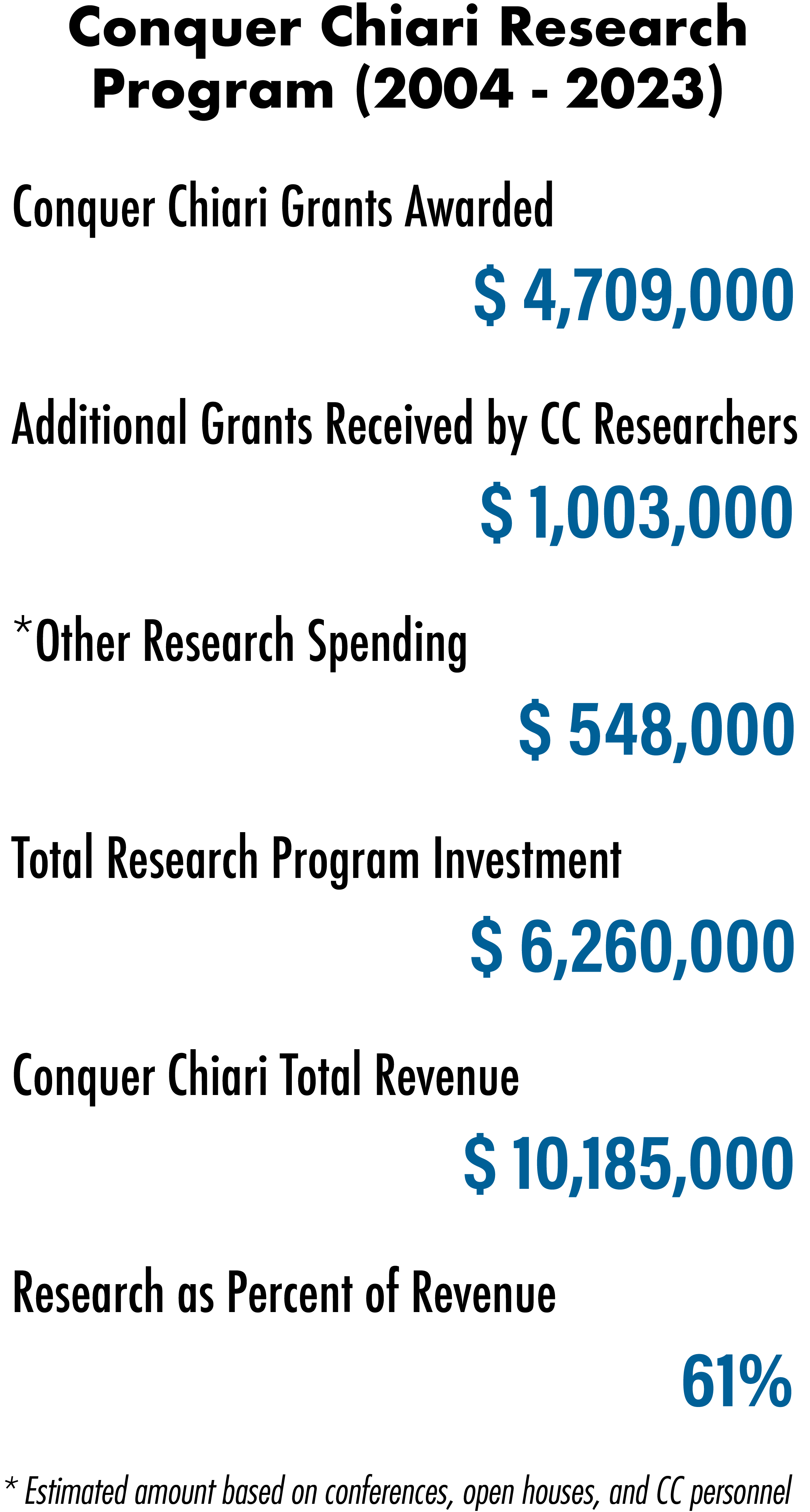

Research at Conquer Chiari
Conquer Chiari believes that research is critical to improving the experiences and outcomes of Chiari patients. As such, we have grown to become the largest non-governmental funder of Chiari research and a recognized leader in the research community.
As of March, 2025 our Research Program has generated 95 peer-reviewed publications, including groundbreaking work on the cognitive effects of Chiari, the genetics of Chiari, quantifying the neuroanatomy and hydrodynamics of Chiari, understanding how syrinxes form and more.
For a list of our program’s publications, click here: (Note that several publications are not included in this list because they were not indexed through the National Library of Medicine.)
Current Research Priorities:
Chiari2030: Beyond the Brain
Selected, Recent Publications:
If you are a scientist or medical professional interested in Chiari research and have a project you would like to discuss, please email: director@conquerchiari.org